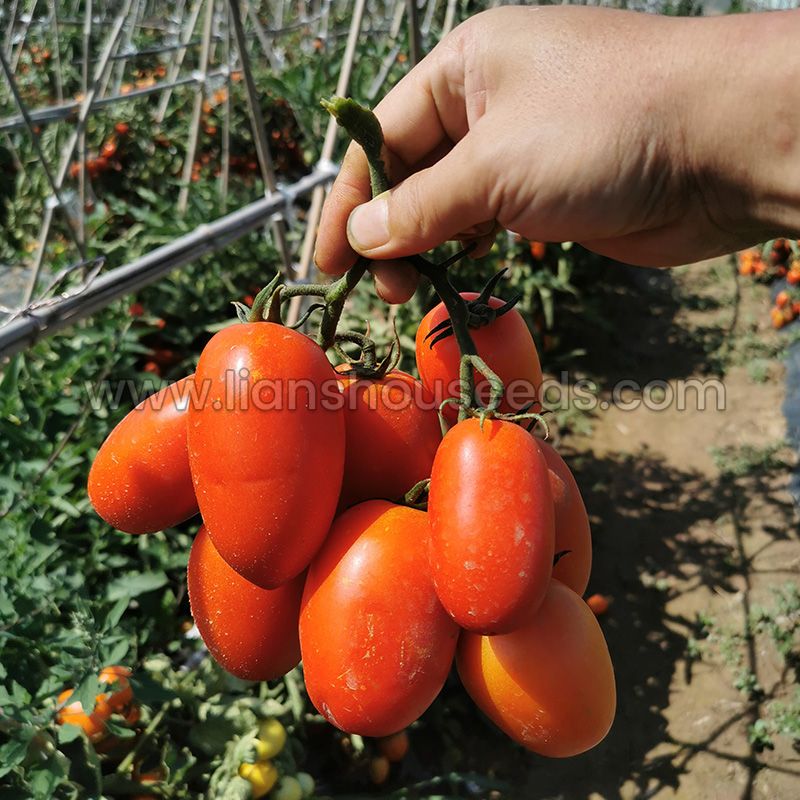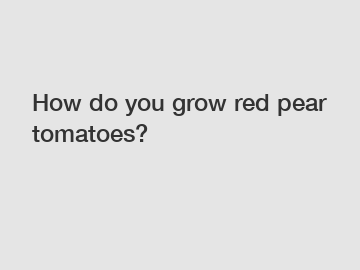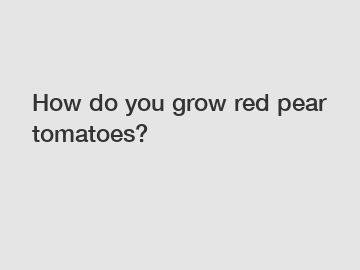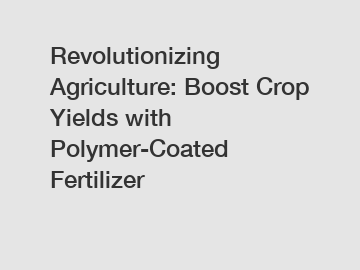How to differentiate determinate and semi-determinate varieties in the field?
In the world of agriculture, the choice of crop varieties can significantly impact the success of a farming venture. Among the various factors to consider when selecting crop varieties, the growth habit is of utmost importance. Determinate and semi-determinate varieties are terms frequently encountered by farmers, as they describe the growth patterns of certain crops, particularly tomatoes and soybeans. Understanding how to differentiate determinate and semi-determinate varieties in the field is crucial for proper management and cultivation. In this article, we will explore the characteristics, benefits, and techniques for distinguishing between these two growth habits.
Understanding Determinate and Semi-Determinate Varieties:
Before delving into differentiation techniques, it's essential to comprehend what determinate and semi-determinate varieties mean and why they matter.
Determinate Varieties:
Determinate plants have a genetically programmed growth pattern where they reach a specific height and produce fruit within a relatively short timeframe. After fruit production is complete, these plants typically cease to grow, making them ideal for mechanically harvested crops. In the case of tomatoes, determinate varieties are often referred to as "bush" tomatoes, as they grow to a predetermined height and tend to have a more compact, bushy appearance.
Semi-Determinate Varieties:
Semi-determinate plants combine characteristics of both determinate and indeterminate growth patterns. They exhibit some controlled growth, usually stopping after reaching a certain height, but they continue to produce new growth and fruit throughout the growing season. Semi-determinate varieties offer a balance between the compactness of determinate varieties and the extended fruit production of indeterminate varieties.
Distinguishing Determinate and Semi-Determinate Varieties:
Differentiating between determinate and semi-determinate varieties in the field requires a keen eye and an understanding of the key characteristics associated with each growth habit. Here are some techniques and factors to consider:
Plant Height:
One of the most apparent differences between determinate and semi-determinate varieties is plant height. Determinate plants have a limited growth potential and usually stop growing after reaching a certain height, which is relatively uniform across a particular variety. On the other hand, semi-determinate varieties may reach a predetermined height but continue growing and producing fruit throughout the season.
To differentiate between the two, observe the plants in the field. If they reach a specific height and appear to cease further vertical growth, you are likely dealing with determinate varieties. Conversely, if you notice continued growth in terms of both height and new branches, you are likely dealing with semi-determinate varieties.
Fruit Production Pattern:
The fruit production pattern can also provide insights into whether a variety is determinate or semi-determinate. Determinate varieties tend to produce fruit in a concentrated period, often over a few weeks. After this initial burst of fruiting, the plant's energy is directed toward ripening and maturing the existing fruit.
Semi-determinate varieties, in contrast, exhibit a more extended and continuous fruit production pattern. While they may start fruiting in a manner similar to determinate varieties, they continue to produce new fruit as the season progresses, even after the initial fruit set.
If you want to know about other fruits, please click here.
Are 3 1 4 planer blades universal?
How do you use walnuts for hair?
Boost Plant Growth with High Potassium Liquid Fertilizer: The Ultimate Solution to Optimize Nutrient Absorption!
What are the problems with gate valve?
Barbed Wire Fence Residential: Pros, Cons, and Ultimate Safety Tips
Where did the red Angel pear come from?
What is the best drill bit to drill through concrete?
Branching Structure:
The branching structure of the plant can be another clue. Determinate varieties often have a more compact and bushy appearance due to their limited growth. They tend to have fewer side branches and may not require staking or support structures. Semi-determinate varieties, on the other hand, tend to produce more branches, resulting in a bushier and more robust appearance.
Flower Buds and Growth Tips:
Observing the presence of flower buds and growth tips is a valuable technique for differentiation. Determinate varieties will typically set most of their flower buds at the terminal end of their branches, and this is where fruit production will be concentrated. Semi-determinate varieties, on the other hand, continue to produce flower buds along the length of their branches and at the tips, allowing for continuous fruit production.
Staking and Support:
While not an absolute differentiator, the need for staking or support structures can provide a clue about the growth habit of a crop variety. Determinate varieties are usually more self-supporting due to their compact nature and limited growth, often requiring minimal staking. In contrast, semi-determinate varieties may benefit from additional support, especially as they continue to grow and produce fruit throughout the season.
The Benefits of Knowing the Difference:
Distinguishing between determinate and semi-determinate varieties is more than just a matter of curiosity; it has practical implications for crop management and decision-making. Understanding the growth habit of your crops allows you to:
Plan Harvesting: Knowing whether you are growing determinate or semi-determinate varieties helps you plan your harvesting schedule. Determinate varieties typically have a more concentrated fruit set, which can aid in planning for a single or a few major harvests. In contrast, semi-determinate varieties require ongoing monitoring and harvesting throughout the season.
Space Management: The growth habit of your crop varieties influences how you space them in the field. Determinate varieties can be planted closer together due to their compact nature, while semi-determinate varieties may require more space to accommodate their ongoing growth.
Support Systems: Based on the growth habit, you can plan for the appropriate support and staking systems. Determinate varieties may require less structural support, while semi-determinate varieties may benefit from trellises, stakes, or other support structures to manage their continued growth and fruit production.
Fertilization and Pruning: Understanding the growth habit allows for more targeted fertilization and pruning practices. You can tailor your management techniques to ensure optimal fruit production and plant health.
Crop Rotation: Differentiating between determinate and semi-determinate varieties is also essential for crop rotation strategies. Knowing the growth habit of your previous crops helps in planning the rotation of compatible crops, reducing the risk of disease and pest infestations.
Conclusion:
Distinguishing between determinate and semi-determinate varieties in the field is a valuable skill for farmers and agricultural practitioners. Recognizing the growth patterns and characteristics of these crop varieties allows for more effective and efficient management, including planning harvests, managing space, providing support structures, and optimizing fertilization and pruning practices. Whether you are cultivating tomatoes, soybeans, or other crops with determinate or semi-determinate growth habits, the ability to differentiate between them will contribute to a successful and productive agricultural operation.
For more nurturing tips, read this article.
The Nutty Goodness: Exquisite Walnut Kernel Halves
Can you put mulch on top of seeds?
What is 15 5 20 fertilizer used for?
Optimal Placement: Ceramic Rings in Aquarium
Cryogenic Gate Valve: Enhancing Safety and Efficiency
Which Innovations in Prison Fence Panels Could Revolutionize Security?
Where do ya pears come from?











